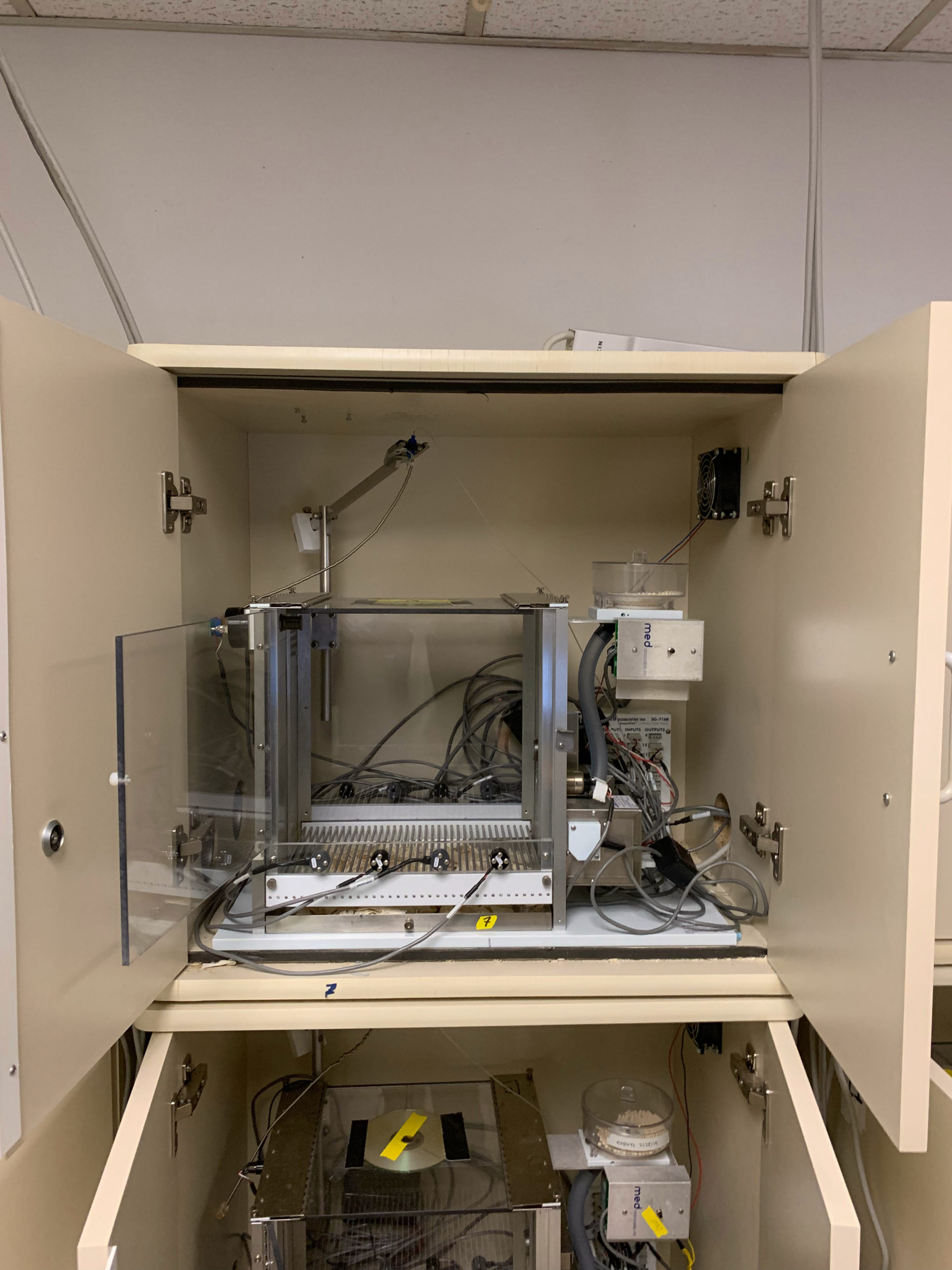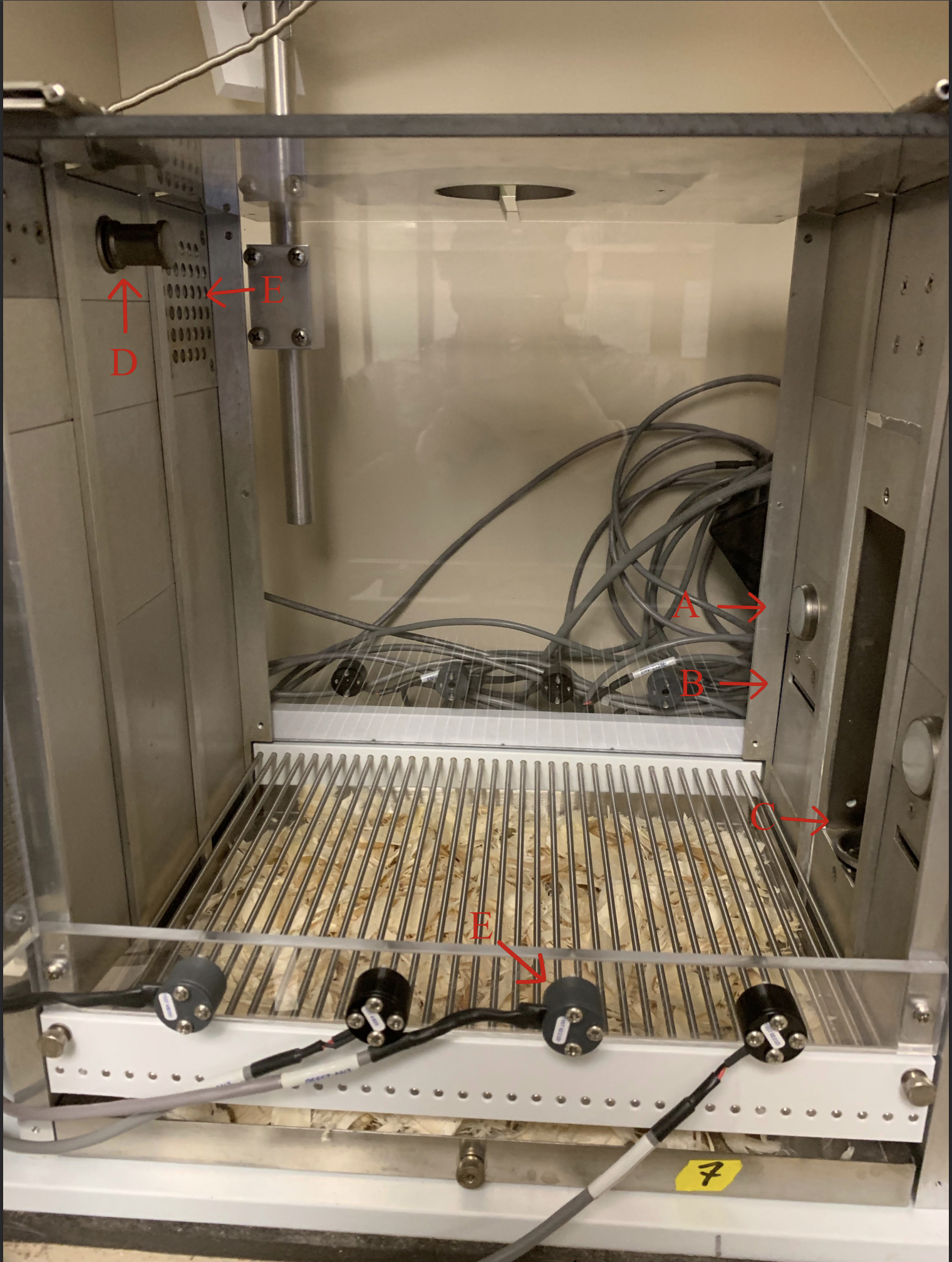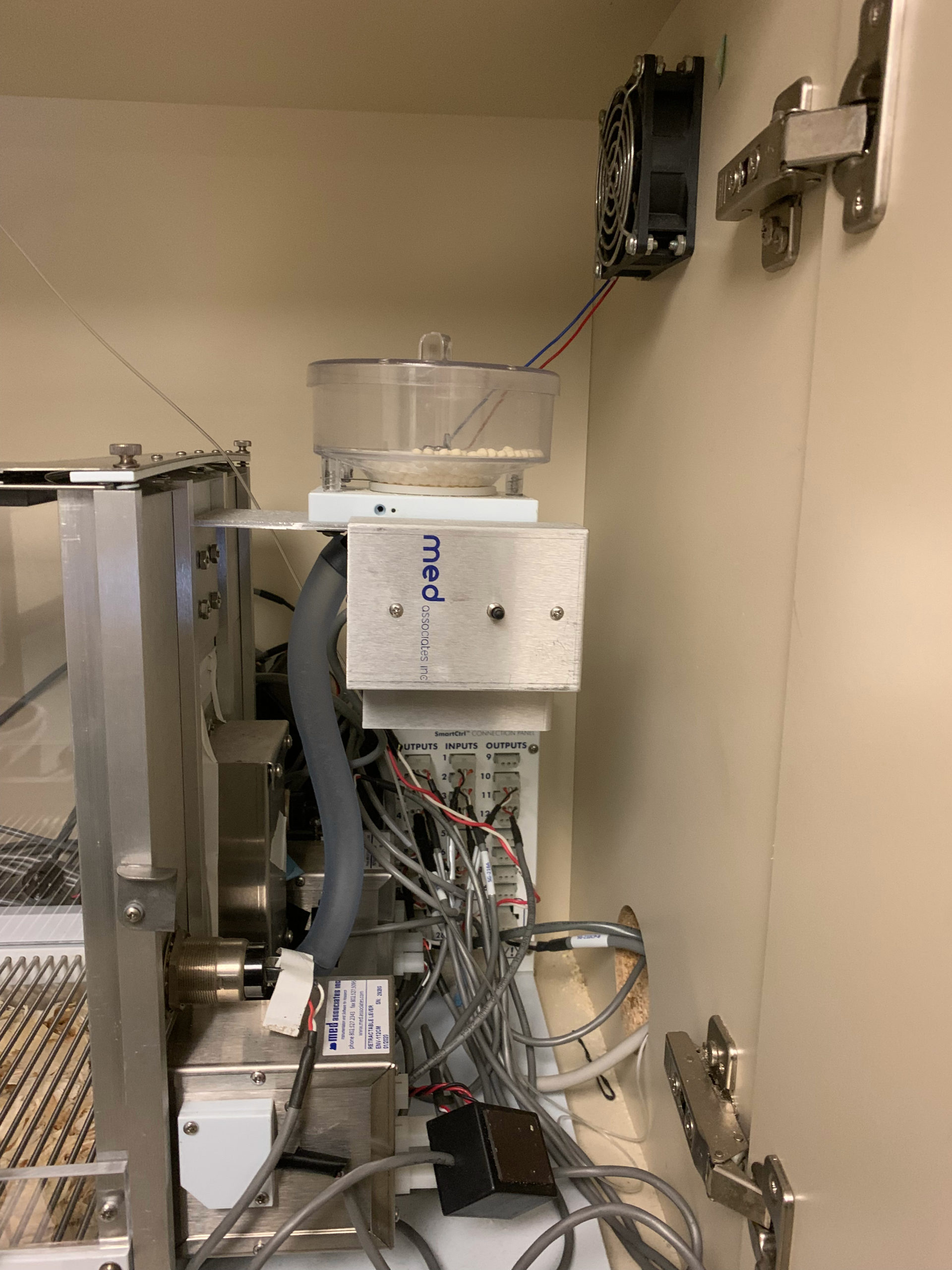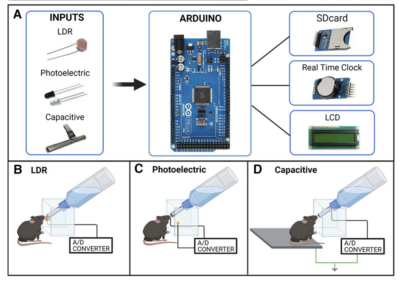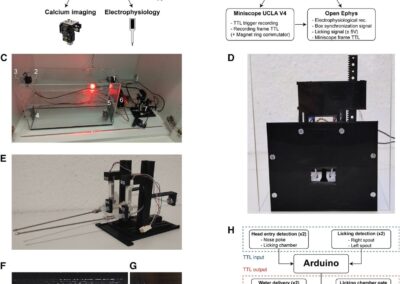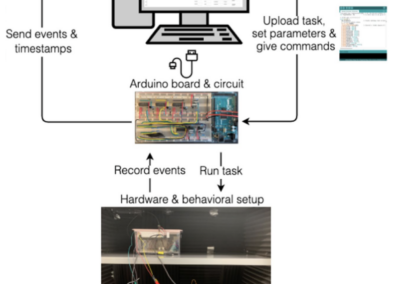PavCA
Thanks to Luke Hannan from the University of Buffalo for providing the following about PavCA, an apparatus for studying Pavlovian conditioned approach!
~~~
Through their association with rewards, reward associated stimuli “cues” can acquire incentive motivational properties (aka incentive value), and thus the ability to attract, reinforce, and motivate behavior (Robinson and Berridge 1993; Robinson et al. 2013). However, there are substantial individual differences in the ability of cues to acquire this incentive value. Through the use of a Pavlovian Conditioned Approach (PavCA) paradigm, we have identified subgroups of individuals that differentially attribute incentive value to a food cue. Below, we describe the construction of the PavCA apparatus using modular hardware purchased from Med-Associates, and the procedures used to identify subgroups with high, medium, or low tendencies to attribute incentive value to a food cue (“sign-trackers”, “intermediates”, and “goal-trackers”, respectively.)
Hardware and Software
Customized rat PavCA chambers are constructed based on modular devices purchased from Med-Associates (Fairfax, Vermont, United States), as detailed in the attached document, including all custom made and commercial parts. The code used to operate the equipment and collect data was written using Med-Associates’ MEDSTATE programming language. This program is then loaded into the Med-PC V operating program, also created by Med-Associates. The data are then exported into a Microsoft Excel spreadsheet using a MPC2XL program, also offered by Med-Associates. Data are then further processed using a Microsoft Access template, which can be found on GitHub along with the MEDSTATE code itself. This template automates the categorization of rats as sign-trackers, intermediates, or goal-trackers using the. PavCA index described in Meyer et al. (2012).
Procedure: Habituation
For 2 days prior to any chamber exposure, the rats are given 25 banana flavored pellets (Bioserv Product Number: F0059) in their home cages each day in order to familiarize them with the banana flavored food pellets. Following this, they are placed into the PavCA chamber and undergo a 5-minute chamber habituation period during which the red LED house light is extinguished. Immediately after this 5-minute period, the house light is illuminated and the subjects are given 25 pellets into a food cup delivered on a variable interval (VI) 1-60 second schedule (i.e., VI30). This is intended to familiarize the rats with the chambers and the food-delivery system. At the beginning of each session, the box is illuminated with a red light on the wall opposite to the food cup. No cue is provided to the rats during this pre-training period, which lasts 17.5 minutes on average.
Procedure: Pavlovian Conditioning
After pretraining, the subjects begin the pavlovian conditioning procedure. This procedure consists of daily 37.5 minute sessions (on average) for a 5 day period. There are 25 conditioning trials per session. Each trial consists of an 8-second extension of a lever (with an LED back-light that illuminates the opening that the lever extends from) followed by the
delivery of the food pellet, which is delivered on a variable interval 30-150s (VI90) time schedule. The number of lever deflections, food-cup entries, the latency to press the lever, and the latency to enter the food cup were all collected using Med-PC software.
Data Analysis
From this paradigm, an index, the PavCA index (a value between -1 and 1), was developed in order to quantify test subjects on a spectrum from goal-trackers (-1), or those that approach the reward delivery location (i.e. food cup), to sign-trackers (1), or those that approach the reward-associated cue (i.e. illuminated lever). This index is calculated using the data collected during the procedure. These data include: (a) the number of lever deflections and food cup head entries during the CS period, (b) the probability of contacting the lever or entering the food cup during the CS period on each trial (defined as the number of trials with a lever press or food cup entry, divided by the total number of trials), and (c) the latency to the first lever deflection or food cup entry. The data are then used to calculate three values:
1) Response Bias = (Lever Presses – Food Cup Entries)/(Lever Presses + Food Cup Entries)
2) Probability Difference = Probability of Lever Press – Probability of Food Cup Entry 3) Latency Score – (Average Food Cup Entry Latency – Average Lever Press Latency)/8
The average of these three scores provides us with the PavCA score on the index as listed above. These scores can then be used in further experiments to assist in the categorization of subjects in varying behavioral paradigms.
Sound Attenuating Chambers:
We used custom-made sound attenuating chambers that were based on the Med-Associates ENV-018MD. These chambers were made by AB Displays Systems, Inc. (Based in Bay City, Michigan 48706; 989-893-6643; Email: abdisplays@sbcglobal.net). These chambers were constructed from Panolam Melamine(fiberglass reinforced plastic), two round air vents on the right wall of the chamber one of which containing a ventilation fan (24V DC ventilation fans [Jameco Prod.Num.: 290029], and fan guard [Jameco Product Number: 31924]), two doors each with euro hinges concealed and an almond D handle on the right door and an eye viewer on the left door. Each chamber has 6 rubber feet located on the bottom, and all edges of the chamber were sealed with weather stripping.
Internal dimensions: W: 24”; H: 24”; D: 16”
Wall Thickness: 0.75”
Conditioning Chamber:
The conditioning chamber itself is a Med-Associates test chamber extra tall modular test chamber with drug infusion top (Model Number: ENV-007CT). The floor was a stainless steel grid floor for mice (Model Number: ENV-005A) as we have found that rats rear more easily on the mouse floors. Food pellets were delivered into a pellet receptacle, cup type with extra tall 6” opening (Model Number: ENV-200R1M-6) that was inserted into the middle panel located on the right side of the chamber and a head-entry detector for rat (Model Number: ENV-254-CB) was installed in the receptacle. These pellets were dispensed using a modular 45 mg pellet dispenser for rats (Model Number: ENV-203MA-45). A 100 mA, 28V DC hooded house light (Model Number: ENV-215M) with a red bulb was installed on the middle panel near the top located on the left wall. To the right or left of the pellet receptacle, a low profile, illuminated retractable lever (Model Number: ENV-112CML) was installed. All wiring for the chambers was done through an 8 Input/ 16 Output SmartCtrl (Model Number: DIG-716P2). Note: some laboratories (e.g. the Flagel Lab at the University of Michigan) use a different pellet receptacle (Model Number: ENV-254-CB).
In this study, 45 mg banana flavored pellets (Bioserv Product Number: F0059)
This research tool was created by your colleagues. Please acknowledge the Principal Investigator, cite the article in which the tool was described, and include an RRID in the Materials and Methods of your future publications. RRID:SCR_022508
Check out projects similar to this!

